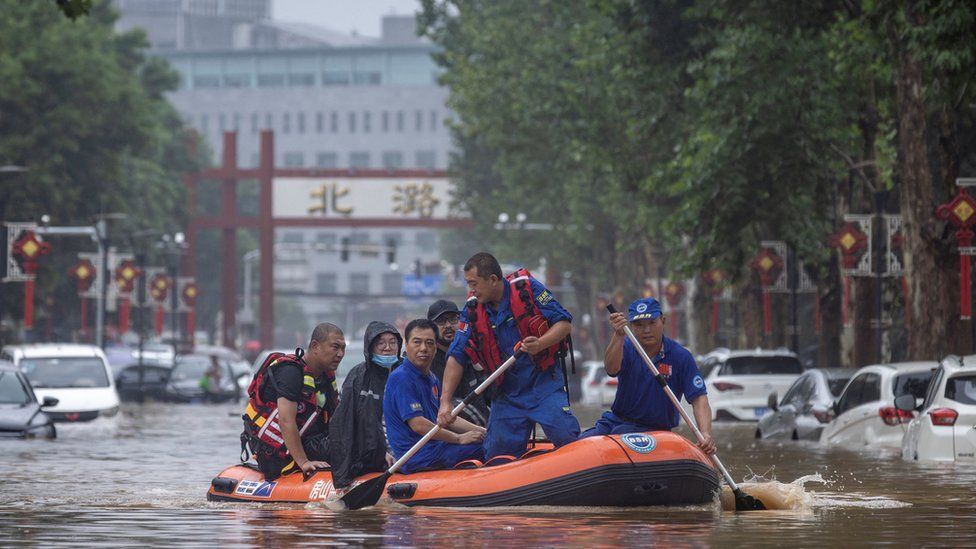The death toll from torrential rains in Beijing has risen to 11, as China braces for its third typhoon in as many weeks.
The remnants of super typhoon Doksuri inundated Beijing for the fourth straight day Tuesday as typhoon Khanun approached the country’s eastern coast.
Another 27 people are missing, state media reports. More than 50,000 others have been evacuated
Train service and road traffic were cut off in several districts.
Heavy rains are likely to persist and flooding could worsen in northern regions around Beijing, Tianjin and Hebei province, the emergency management ministry has warned.
Military helicopters were deployed in the early hours of Tuesday to deliver emergency food supplies and ponchos to people stranded in and around a train station in the hard-hit Mentougou district in western Beijing, CCTV reports.
Around 150,000 households in the district are without running water.
Nearly 400 flights on Tuesday were cancelled and hundreds delayed at Beijing’s two airports, according to flight tracker app Flight Master.
Footage shared online by residents in the surrounding Hebei province show swathes of land engulfed by floods.
Residents in several neighbourhoods in Zhouzhou just 10km (6 miles) north of Beijing have reportedly been trapped, some for almost 24 hours, as rescue workers are unable to reach them.
On Monday, state television published a clip of the dramatic rescue of a man clinging to an overturned car caught in raging floodwaters in Wu’an city, also in Hebei. The man and his car were pinwheeling down a flooded river before he was lifted to safety by a helicopter.
Like many parts of the world, China has been seeing extreme heat and rain in recent weeks, which some scientists have linked to climate change.
Doksuri made landfall in China’s south-east Fujian province on Friday, triggering landslides and floods before moving north towards the capital. It came a week after typhoon Talim.
China’s Meteorological Bureau said an average of 170.9mm (6.7in) of rain fell on Beijing between Saturday night and noon on Monday, the equivalent of the average rainfall for the entire month of July.
Typhoon Khanun is expected to enter the East China Sea on Wednesday before moving to China’s coastal provinces Zhejiang and Fujian.
This video can not be played
To play this video you need to enable JavaScript in your browser.
Related Topics
- Asia
- Climate change
